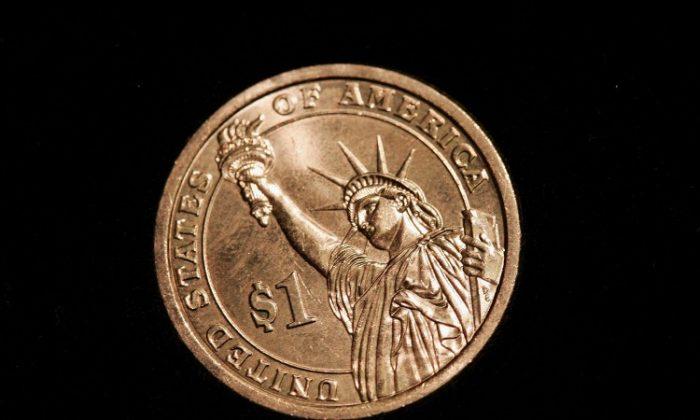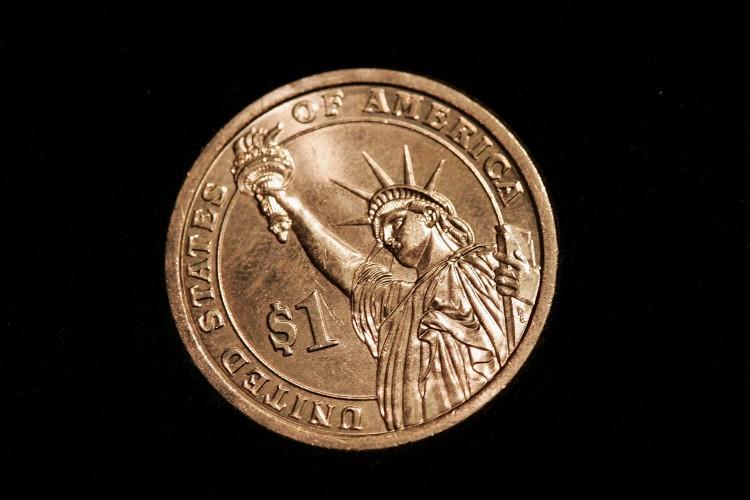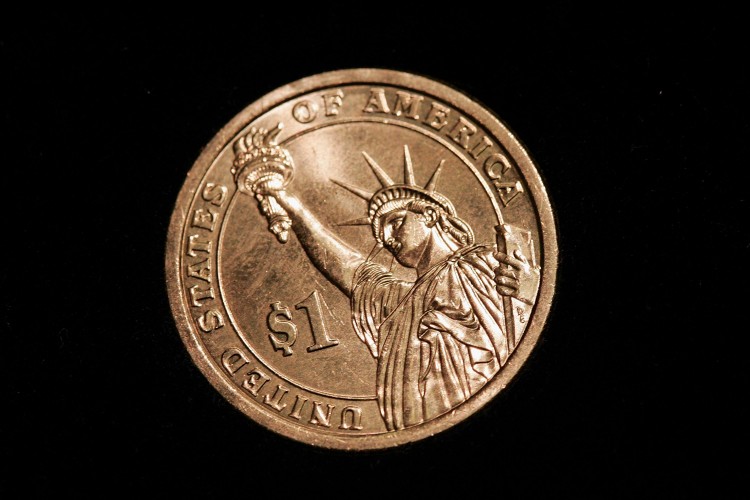Government advisers say that switching from paper to coin dollars could save the United States big money, but some believe that the plan is based on a very unlikely assumption.
Since 1979, the Government Accountability Office (GAO) has tried to sell Congress on the idea of the $1 coin. According to the latest GAO report, “Alternative Scenarios Suggest Different Benefits and Losses from Replacing the $1 Note with a $1 Coin,” popularizing the coin could save the government at least $4.4 billion over the next 30 years.
The problem is that Americans have shown an overwhelming preference for the paper dollar. From Susan B. Anthony to Sacagawea, about 1.4 billion $1 coins languish in inventory at the Federal Reserve.
The GAO admits that previous efforts to promote the $1 coin have failed, but says the key to success is removing the competing $1 bills from circulation, thus restricting consumers to a system where the coin is the only option.
A recent Rasmussen Reports survey found that only 21 percent of Americans support phasing out the dollar bill in favor of the coin. According to Robert Whaples, professor of economics at Wake Forest University in North Carolina, fighting this consumer preference will be a losing battle.
“Economists believe that people reveal their preference to things—you give them a choice and see what they pick,” said Whaples. “And we’ve given them the choice, and they’ve picked the bills.”
Nearly all the savings behind the GAO’s latest proposal is due to an increase in something called seigniorage—the difference between the cost of manufacturing currency and its face value. It costs far less to make a dollar—coin or paper—than what it is worth in the marketplace, and what is left over is profit for the government.
Coins have a slight advantage of seigniorage over bills due to longevity, but most of their expected profit comes from spending habits. Americans have demonstrated that they spend coins differently than bills, so the GAO predicts that they will need about one-and-a-half times more coins to match the number of bills currently in circulation.
More currency in circulation means more seigniorage.
But Whaples said that the big problem with the GAO proposal is the assumption that consumer demand for the coin will match the growth rate of the economy over the next 30 years.
“I find that totally out of line. Think about what has happened in the last 30 years: People have switched more and more away from physical dollars—they’re using electronic,” Whaples said. “Thirty years from now, we might not even be using coins.”
Supporters of the GAO proposal point to several other countries that have seen success with switching to coin currency in amounts comparable to the U.S. dollar.
However, Whaples notes that in all of these examples, including Japan, France, Canada, and others, the switch to coins happened in the 1970s and ‘80s, at a much different time in history.
“Back then, it would have made more sense to switch, because people were using way more of this physical money,” Whaples said. “But it doesn’t make sense to me now.”
Congress tried to bring more attention to the $1 coin with the Presidential $1 Coin Act of 2005, which mandated that the U.S. Treasury mint the denomination with the likeness of every U.S. president. But by December 2011, the plan was abandoned due to lack of interest and a surplus of coins.
“In these tough times, Americans are making every dollar count, and they deserve the same from their government. We simply shouldn’t be wasting taxpayer money on money that taxpayers aren’t using,” said Treasury Secretary Timothy Geithner in a December 2011 news release.
Advocates for the $1 coin say that intense lobbying efforts have maintained the dollar bill’s presence in the marketplace, but they have not given up the fight.
The GAO made its latest appeal for the benefits of coins over bills on Nov. 29, 2012, with “Benefits and Considerations for Replacing the $1 Note with a $1 Coin,” but the window of opportunity may have already closed.
Considering the enormous drop in U.S. production of other coins—pennies, nickels, dimes, and quarters—over the past three years, Whaples said that the demand for the already unpopular $1 coin will likely plummet as well, even if the $1 note is no longer available.
“If they switched, they would create a whole bunch of these extra dollar coins, and then people wouldn’t want to use them—just like they don’t want to use them now,” Whaples said. “They'll switch even faster over to electronic payments, because they just do not find the dollar coin very convenient.”
The Epoch Times publishes in 35 countries and in 19 languages. Subscribe to our e-newsletter.







